Extract from the Royal Navy Prayer
Eternal Lord God, Preserve us from the dangers of the sea, and of the air,
and from the violence of the enemy;
That enemy was the Naval and Air Forces of Germany Italy Vichy France and Japan,.
Time has now done what they could not
Vale James
VE Day 2022
The Soviet War Memorial in London
Geraldine Mary Harmsworth Park around the Imperial War Museum
On this day the elderly Russian veterans
who visited Britain for VE Day assembled to pay their respects to their
comrades who sacrificed their lives for the future of Russia and the
allies but a notice on the website of the Soviet War Memorial
announced that for the third successive year no ceremony would be held.
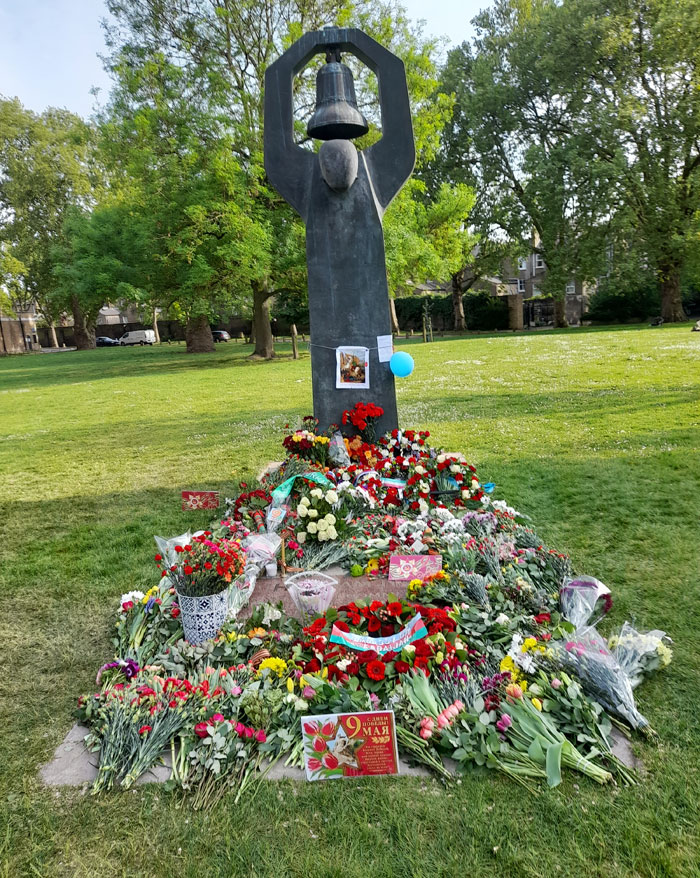
This memorial commemorates the 27 million Soviet citizens
& service men & women who died for the Allied Victory in WWII
WE SHALL REMEMBER THEM
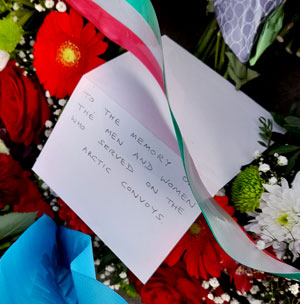 Clare Armstrong took this photograph on 9 May 2022, celebrated in Russia as VE Day, and e-mailed it to the members of the HMS Belfast Association with this message:
Clare Armstrong took this photograph on 9 May 2022, celebrated in Russia as VE Day, and e-mailed it to the members of the HMS Belfast Association with this message:
I
went to the
Soviet War Memorial at the IWM. There were flowers or wreaths laid by
the Embassies of Azerbaijan, Turkmenistan and Kazakhstan and by the
Soviet Memorial Trust and a personal tribute: "to the memory of the men and women who served on the Arctic Convoys".
A nice young couple with a baby in a
pram laying flowers asked me to take a photo of them in front of the
Memorial. I asked them if they were Russian and they said,
'Yes'. I told them my father served in the Arctic Convoys and
that men from the US, the UK and many other nations had taken part in
what proved to be perilous and often truley horrendous journeys to
deliver military equipment and other much-needed supplies to Murmansk
and Archangel, at Stalin’s request. It was clear they had no idea
what I was talking about, which I found quite surprising!
It’s so very sad that it’s now
highly unlikely there will be another of these very special
commemoration events in London on Russia Victory Day in my lifetime.
Clare is the daughter of a Liaison Officer in the Polish destroyer ORP
Garland,
part of the escort for Convoy PQ16, in May 1942: "Garland was
built on the Clyde in 1934 and loaned to the Polish Navy in 1940. She
was heavily bombed with 22 dead and 46 wounded, released from escort
duty and sent on to Murmansk alone."
Clare found
a rare book about this operation in her father's papers and donated it to the IWM.

 HMS WALKER
HMS WALKER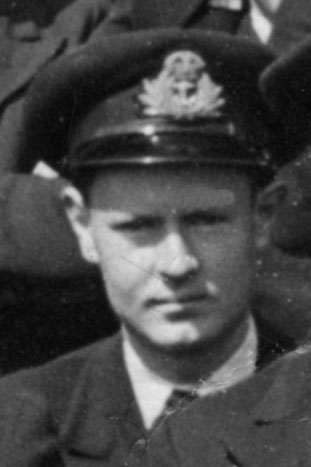
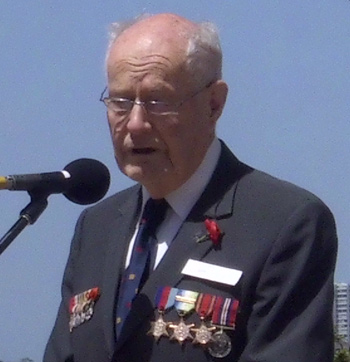 James used his second name because
his father was also named John. John Collings Taswell Glossop
(1871-1934) was born in Twickenham, the son of a Vicar and served in
the Royal Navy but gained fame as an exchange officer with the Royal
Australian Navy in World War I. As Captain of HMAS Sydney he sank the Germany Navy’s SMS Emden
in November 1914. He married an Australian girl from Bathurst, New
South Wales, but retired to Dorset where James Glossop was born at
Burton Bradstock, on 27 February 1924 when his father was 53.
James used his second name because
his father was also named John. John Collings Taswell Glossop
(1871-1934) was born in Twickenham, the son of a Vicar and served in
the Royal Navy but gained fame as an exchange officer with the Royal
Australian Navy in World War I. As Captain of HMAS Sydney he sank the Germany Navy’s SMS Emden
in November 1914. He married an Australian girl from Bathurst, New
South Wales, but retired to Dorset where James Glossop was born at
Burton Bradstock, on 27 February 1924 when his father was 53. 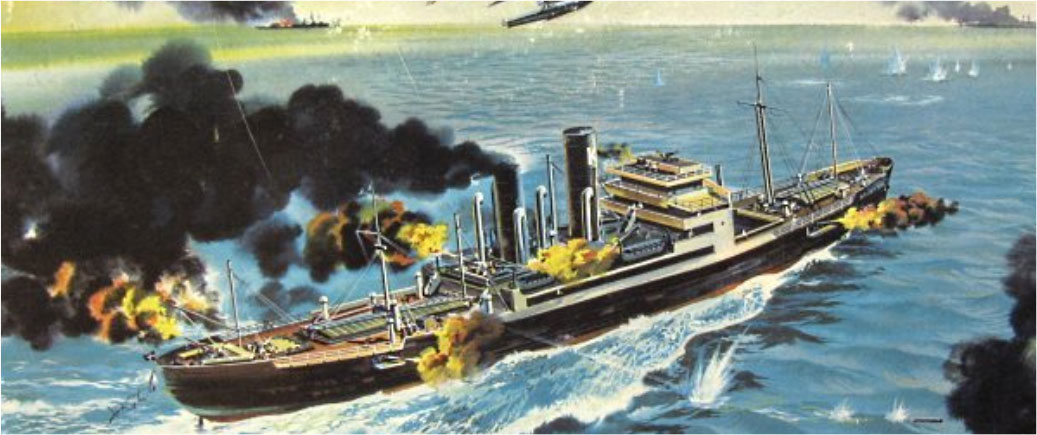
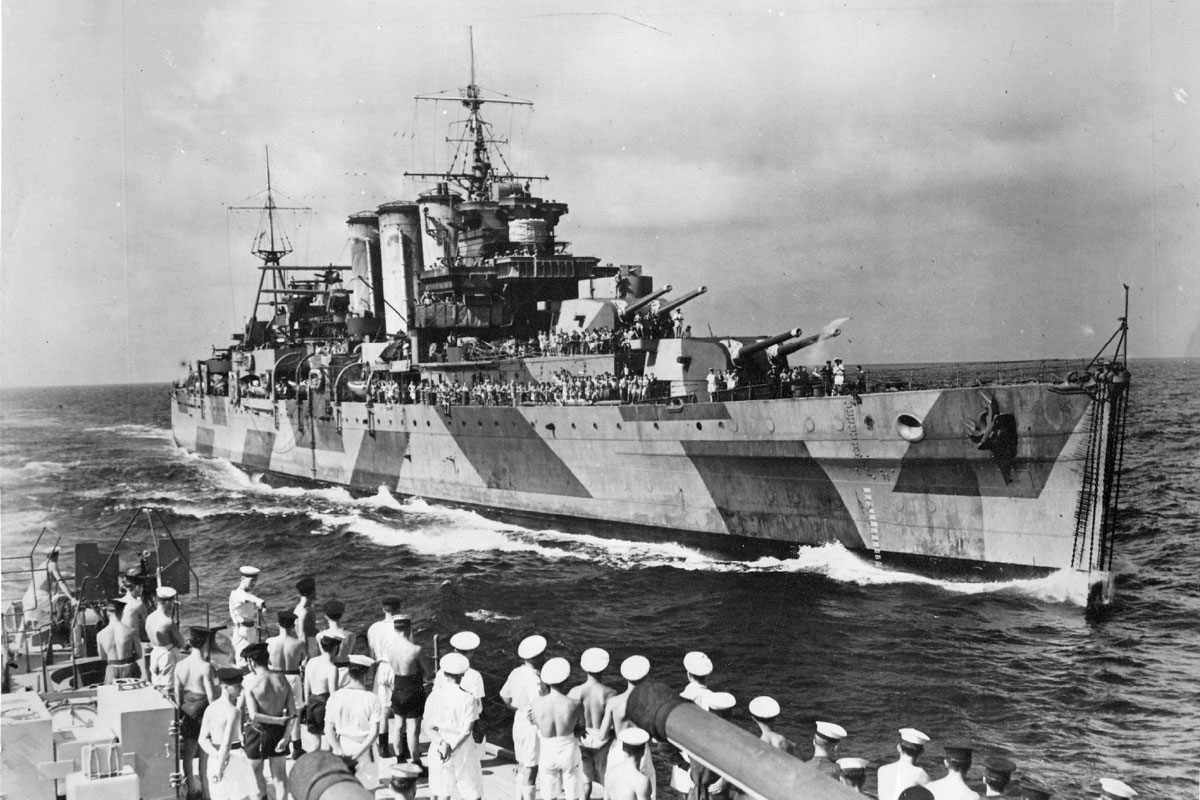
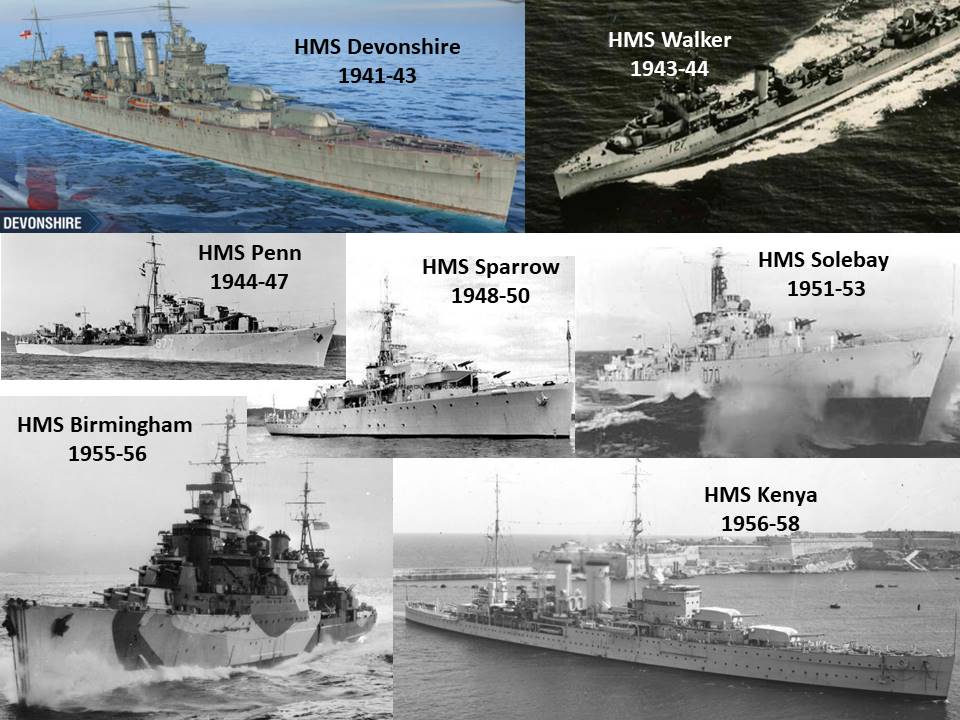
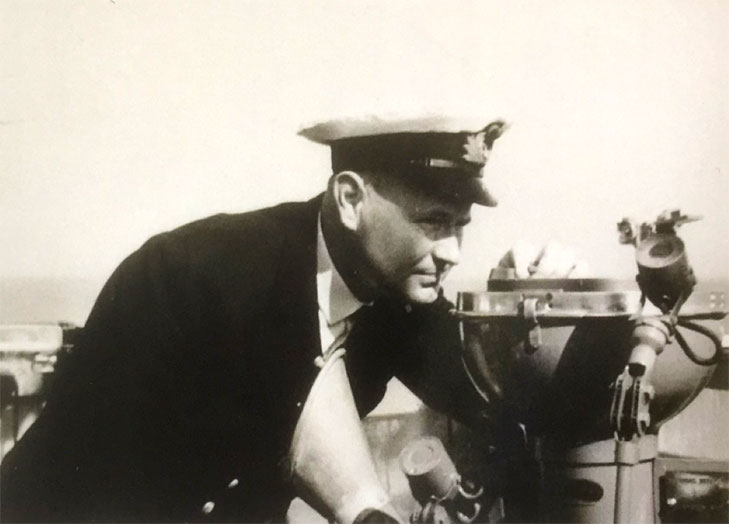
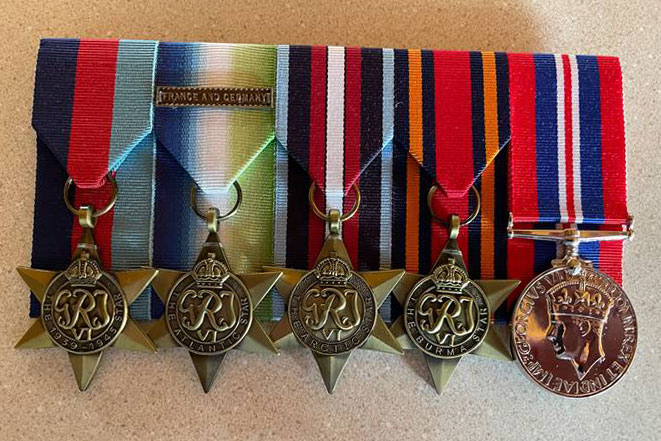
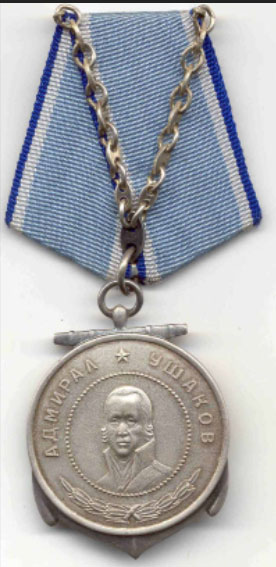
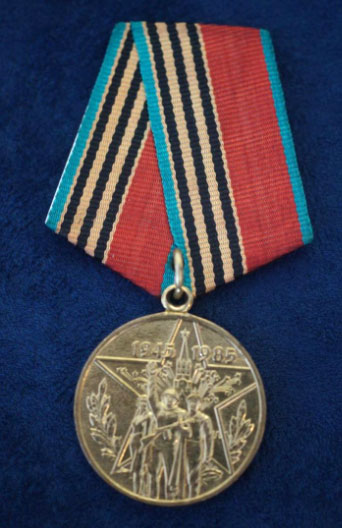
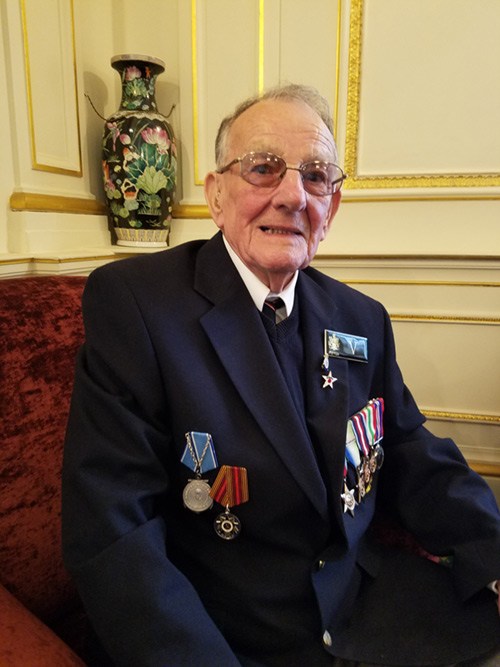
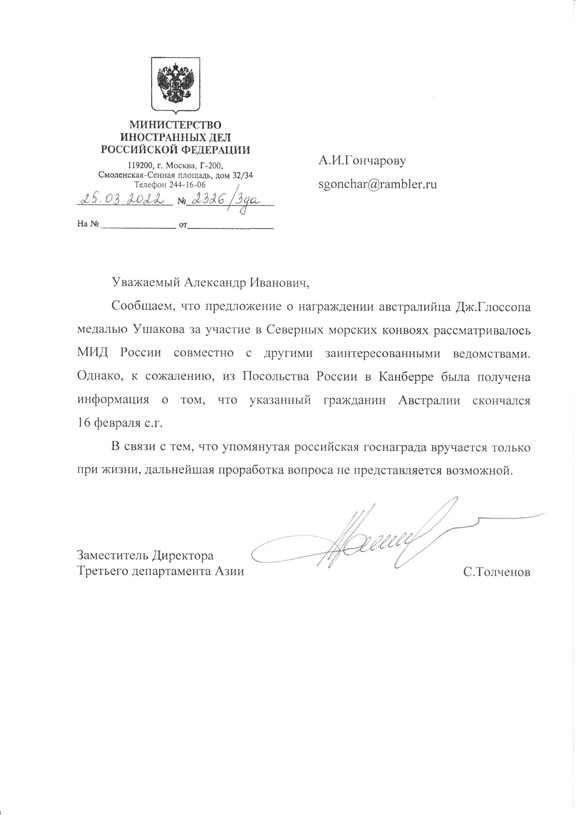
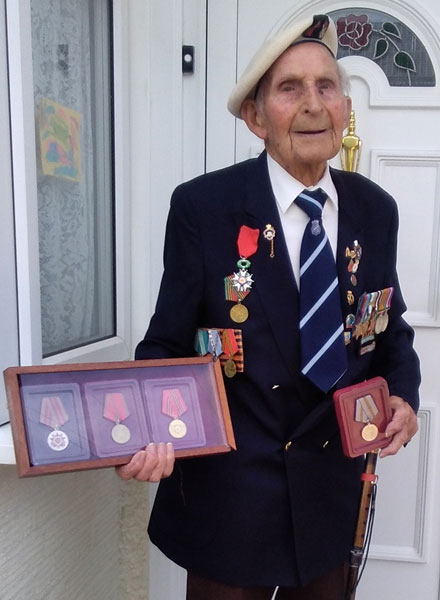
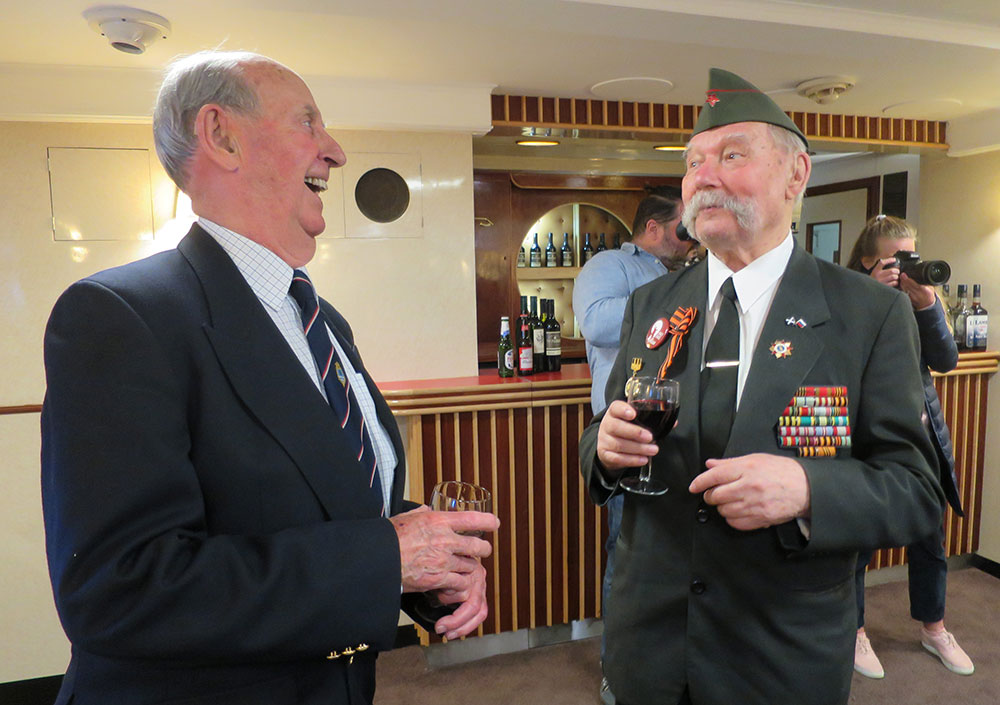
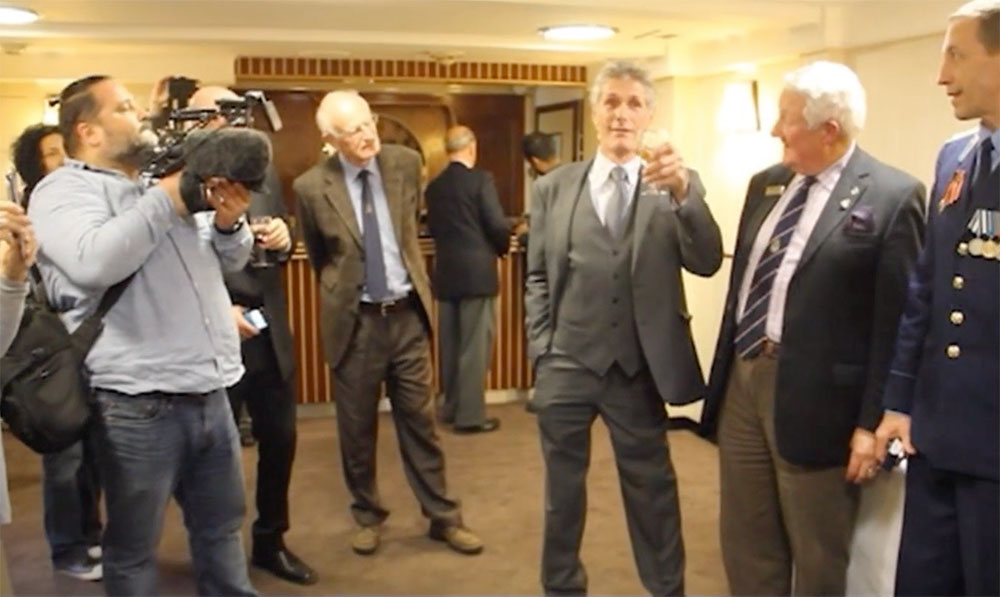
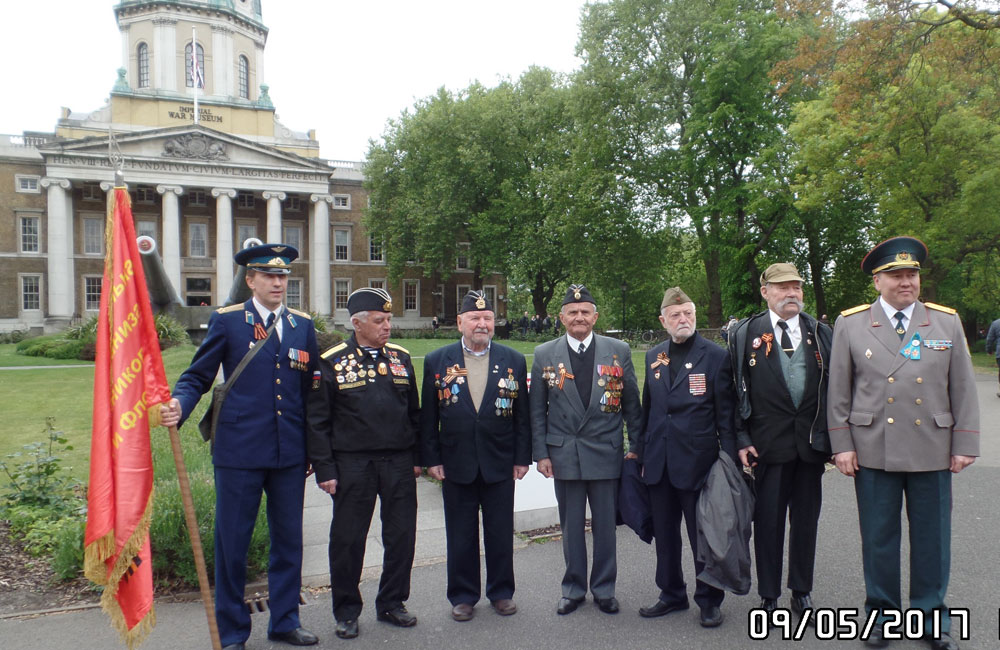
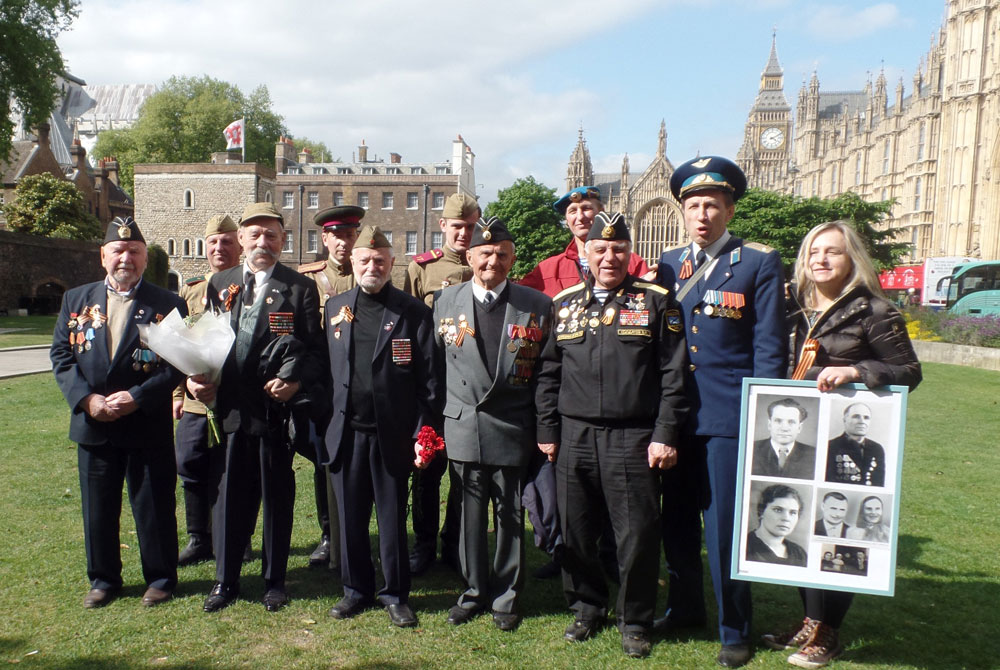
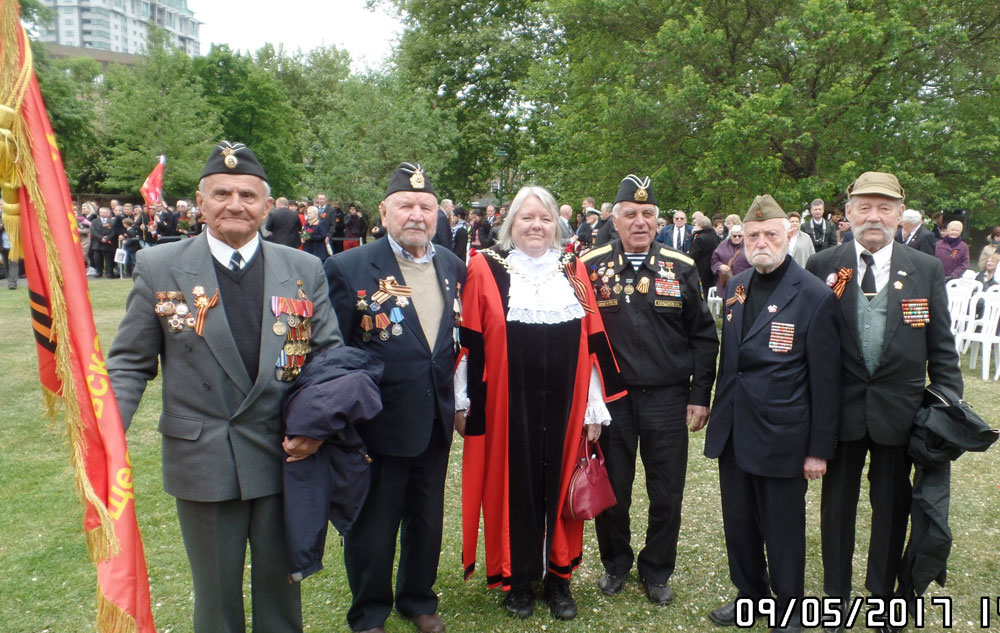
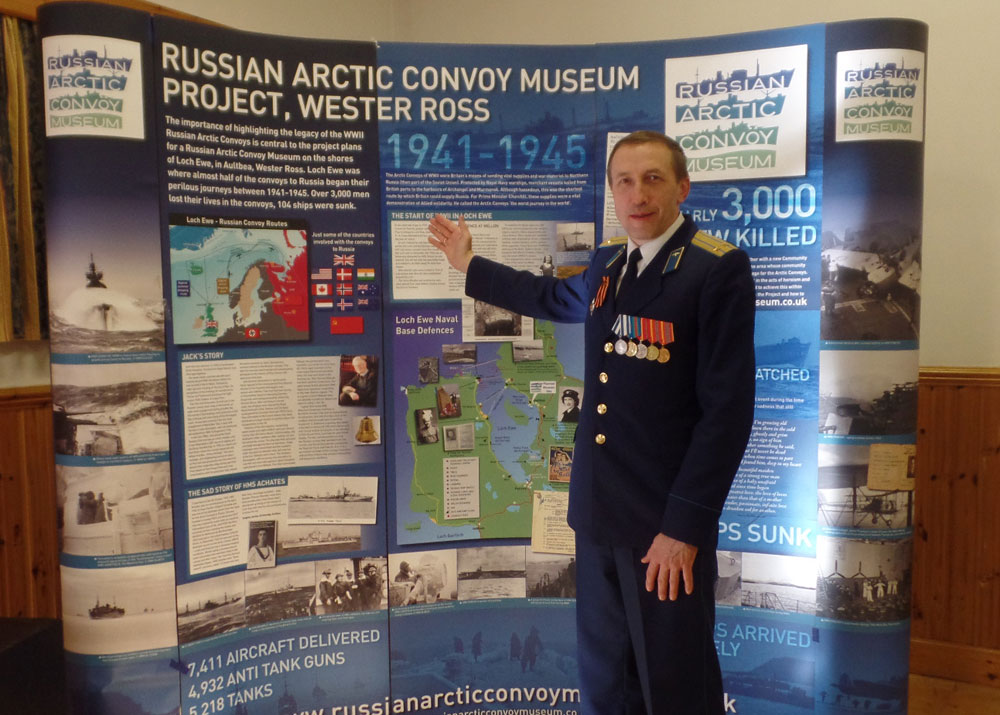
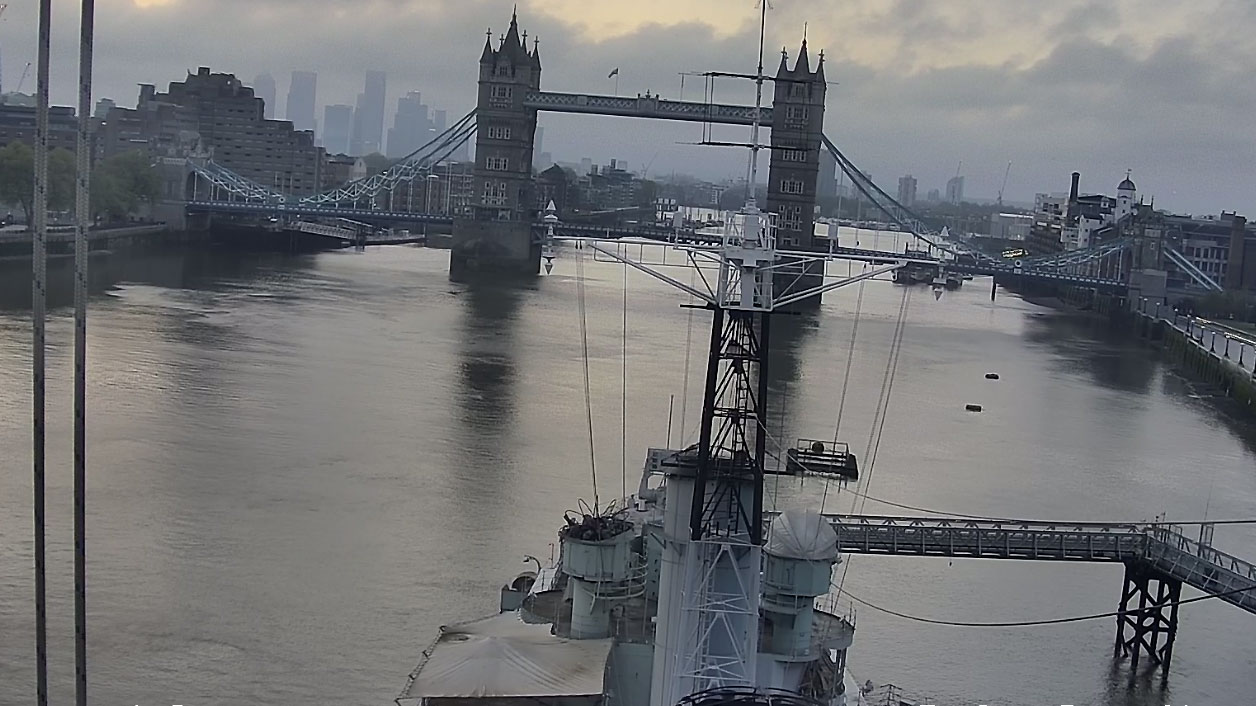

 Clare Armstrong took this photograph on 9 May 2022, celebrated in Russia as VE Day, and e-mailed it to the members of the HMS Belfast Association with this message:
Clare Armstrong took this photograph on 9 May 2022, celebrated in Russia as VE Day, and e-mailed it to the members of the HMS Belfast Association with this message: